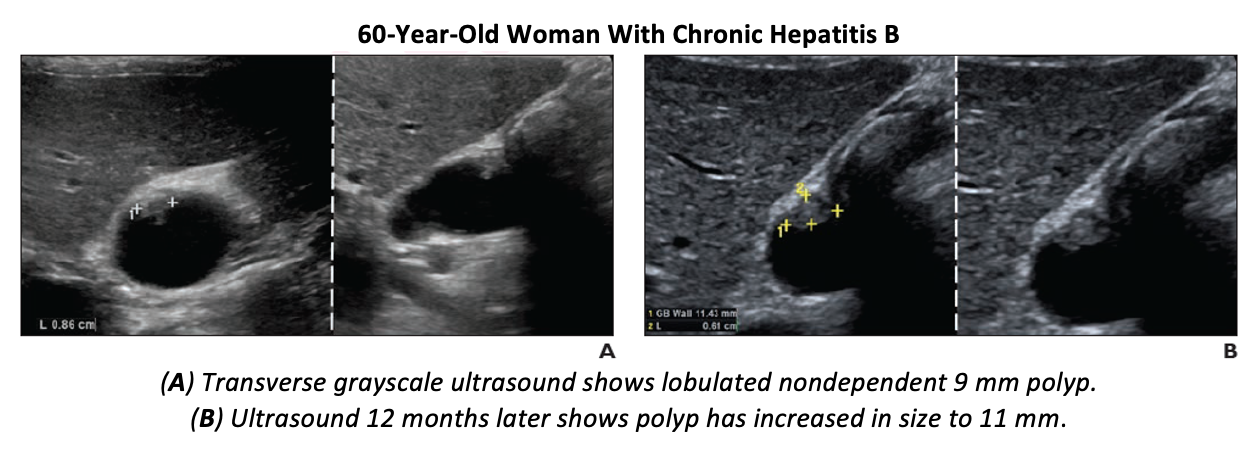Study Says European Guidelines for Surveillance of all Gallbladder Polyps is too Conservative
 Authors of a study published in the American Journal of Roentgenology (AJR) say recent European multi-society guidelines proposing routine surveillance of essentially all gallbladder polyps, especially a 2 mm size change as the basis for cholecystectomy, are likely too conservative for clinical application.
Authors of a study published in the American Journal of Roentgenology (AJR) say recent European multi-society guidelines proposing routine surveillance of essentially all gallbladder polyps, especially a 2 mm size change as the basis for cholecystectomy, are likely too conservative for clinical application.
“To our knowledge,” wrote corresponding author Aya Kamaya of Stanford Hospital and Clinics in California, “our study is the first conducted in the United States to longitudinally evaluate gallbladder polyps exclusively in patients with underlying liver disease.”
Kamaya and colleagues’ retrospective study included patients who underwent at least one screening ultrasound examination between January 2010 and December 2020, as part of a hepatocellular carcinoma (HCC) screening and surveillance program that demonstrated a gallbladder polyp.
Among the 434 patients (248 male, 186 female; mean age, 50.6 years) with incidental gallbladder polyps who underwent serial ultrasound examinations for HCC surveillance (range, 2–19 examinations; mean interval between first and last examinations, 3.6 years), the polyps fluctuated—increased and decreased on serial examinations—in number and size in 22% and 18% of patients, respectively. No gallbladder carcinoma was identified in the 19 patients who underwent cholecystectomy.
Acknowledging that gallbladder polyps can fluctuate in both size and number over serial examinations, and may even fluctuate in visibility, “using a 2 mm threshold for growth,” the authors of this AJR article concluded, “10% increased in size.”